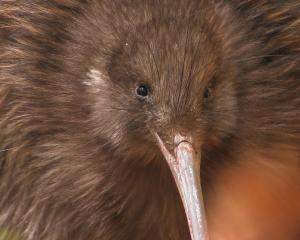Walking around the peaceful tracks of Orokonui Ecosanctuary, particularly during mushroom season, you cannot help but notice huge swaths of fungi decorating the forest floor. Those with vibrantly coloured caps and bodies make a bold statement, others require a moment of pause and a keen eye before they start making an appearance.
Fungi are often under-appreciated members of our ecosystems. They are essential though, in contributing towards a balanced environment, as mutualists, decomposers and pathogens. To carry out their various jobs they must be able to disperse, colonise and survive in new locations.
This is where fungal spores come in. About 95% of spores produced by a traditional mushroom-shaped fungus only travel up to 1m from their fruiting body. To get any further, fungi require the help of dispersal agents such as insects, reptiles, avians, marsupials and other mammals, even you and I. Spores might hitch a ride to new locations on someone’s feathers or fur, maybe a pair of old shoes or even by being eaten (mycophagy) and excreted elsewhere.

What better way to investigate this than with the takahē, our favourite blue and green feathered friends and Orokonui Ecosanctuary residents.
North Island takahē (aka moho) and South Island takahē used to roam New Zealand in much greater numbers. For 50 years all were thought to be extinct until in 1948 George Orbell discovered South Island takahē surviving deep within Fiordland’s Murchison Mountains. Today ecosanctuaries, conservationists, and the like help to support New Zealand’s population, less than 500 individuals, of this very special bird.
Takahē are flightless ground-dwelling birds, they spend an extraordinary amount of time grazing and investigating their habitat, it makes sense that their exposure to fungi living in this space is high.
Rain, hail and shine, these precious parcels of poop were collected and taken back to the Department of Botany’s labs, so that scientific analysis could begin.
After turning portions of the dung samples into something that might have closely resembled green juice, many fungal species were able to be isolated and grown on agar plates. These included a variety of fungi following different life strategies, such as crust fungi (the kind often found on decomposing tree branches), plant pathogens and even the popular edible mushroom Flammulina velutipes, commonly known as enoki!
The success of this culturing experiment means that the Orokonui takahē, simply by going about their daily business, are playing a special role in dispersing fungi that have survived the digestive process about the landscape.
After much more involved tinkering in the lab, think endless amounts of little test tubes and even tinier volumes of special liquids, fungal eDNA can be extracted, amplified, and sequenced revealing hundreds of fungal species.
Identified amongst these were the DNA sequences of important fungal species from one of the larger mycorrhizal genera, genus Cortinarius.
Mycorrhizal fungi create an underground network where they form mutualistic relationships with certain plant roots, supporting overall forest health and helping to supply plants with the materials they need to survive. New Zealand Nothofagus, or beech trees, for example, cannot survive without this crucial association. Around 90% of ectomycorrhizal species (a type of mycorrhizal fungi) found in these forests are mostly endemic, 57 out of 226 of these are Cortinarius species.
Orokonui takahē are actively dispersing fungi around their habitat, potentially including important mycorrhizal species. Their dung not only reveals to us a comprehensive snapshot of the local fungal community but also a glimpse into the past.
Following human colonisation, New Zealand unfortunately lost about 49% of its endemic bird species. Would our extinct endemic birds have been playing a similar ecosystem service? I think it certainly pays to consider how this drastic loss of potential fungal dispersal agents might have influenced the health and perhaps spread of our forests.
Next time you pay a visit to your local takahē, make sure you thank them for all their hard work. Providing means of fungal dispersal is a full-time job.
Josie McGovern is researching takahē dung as a tool for investigating local fungal communities and as a route for fungal dispersal for her MSc (Department of Botany, University of Otago).











